There are a lot of things you should know before starting a timber harvest. Who do you want to work with? What are the regulations you need to abide by? What results should you expect? The list goes on. Let’s explore the top 5 things you should figure out before your timber harvest.
1. The Rules and Regulations You Should Know
The first thing you should probably know is what laws there are that affect your timber harvest. At Tall Pines Forest Management, we focus on helping our neighbors in Maine and New Hampshire with their forestry needs. Below are links to the most recent official guides to each of these states’ timber harvesting laws and regulations.
Maine laws and regulations regarding timber harvests
New Hampshire’s laws and regulations regarding timber harvests

2. How Your Taxes Will Be Affected
A lot of this depends on factors beyond the immediate scope of your timber harvest. There are different rules in different states that impact timber income taxes. Your best choice is to find an accountant with a good understanding of what your tax situation is currently and how the income from timber harvesting will affect it. There are a variety of ways a knowledgeable accountant can minimize or alter the impact that timber income will have on your taxable income and other fiscal liabilities.
Below are links to the basic rules around timber income taxes in both Maine and New Hampshire.
Maine Timber Taxes
New Hampshire Timber Taxes
3. What Sorts of Objectives You Could (And Should) Be Setting
When most landowners first set the goal of regularly harvesting their timber, it’s common to assume that there’s really only one goal with such an operation: to make money. While that’s certainly a common main objective, this isn’t because it’s all that can be achieved. Further, you don’t have to settle on a single exclusive goal. In fact, many landowners have several goals in mind when they start working with a forester. Below we have some examples of goals that forestry can help you achieve before, during, and after timber harvests.
Example Forestry Goals
- Better or more habitat for animals – When executing a timber harvest, large quantities of slash are generated that can be used for many applications or none. One possible application of slash is creating large piles of it that can serve as a habitat and home for dozens of animals. This can not only help displaces fauna but create new safe habitats for a range of species.
- Changing the species composition of your timber – A very common goal or subgoal in forest management is encouraging the growth of more valuable timber species on your land. However, you can set different goals if your primary concern isn’t just income. If you have a favorite tree species or an ideal forest composition in mind, your forester can help you maximize the success of your ideal forest species.
- Increasing watershed integrity – You’ve probably heard about “the watershed” as a New England landowner, but you may not have gotten a great explanation of what it means and how you affect it. Generally speaking, a watershed is an uphill surface area that empties excess rainwater into waterways.
What keeps the watershed from becoming a landslide is the integrity of the soil, which is largely determined by the density of root systems in that soil. If you’re using a waterway for drinking water, tourism, or another purpose, it might feasibly be a goal of yours to keep the water as clean and clear as possible. A forester can help you achieve this goal. - Creating a carbon offset opportunity – The most popular type of carbon offset program is that of not harvesting trees that would be otherwise. If you establish a (or have an established) history of timber harvesting on your land, you may be able to qualify to participate in a carbon offset program by agreeing not to harvest your land in the future in exchange for payment from companies looking to offset their carbon footprints.
Generally, this is only something that can be done with a truly large plot of forested land. There are also many complications around this industry, including a less-than-stellar track record of carbon offset credits being adequately vetted. Speak to your forester to learn more about how you might be able to get involved in such a program.
4. Whether You Need Insurance
Generally speaking, as a landowner in Maine and New Hampshire, you’re pretty well insulated by the law from liability concerns associated with activities like hunting and fishing. However, when you’re taking on an active project on your land, like a timber harvest, you may need supplemental insurance to cover your liability toward the people working on your land. Your timber harvesting contractor should have insurance to cover this need and be able to provide proof of insurance, but it’s incumbent upon you as a landowner to verify that they do. Your forester should be knowledgeable on this subject, but you may want to talk directly to your homeowner’s insurance company to find out what your existing policy does and does not cover.
5. Your Forest Management Plan
Jumping right into a timber harvest without optimizing your woodland or planning out the harvest itself is risky. Without a forester to guide you through the process, it’s all too easy to overlook a necessary permit or to harvest in a way that makes your next harvest less bountiful rather than more profitable.
This is why we almost always recommend starting with a timber assessment and forest management plan at Tall Pines Forest Management. If you’re thinking about harvesting, give us a call, we can help you get more out of your next harvest with less effort.

0 Comments